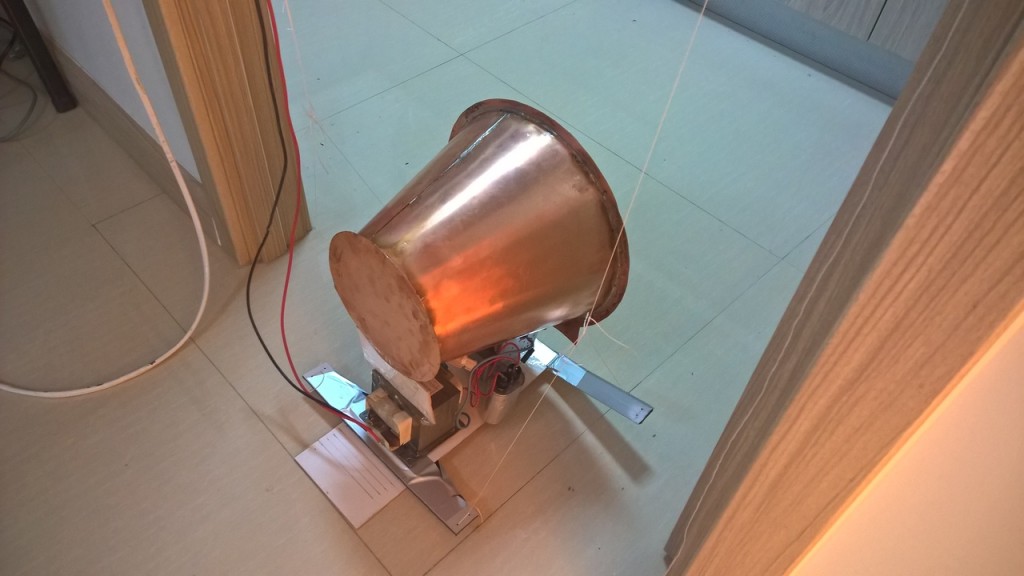German physicists have confirmed the performance of the "impossible" engine on the electromagnetic load

German scientists have confirmed that an "impossible" engine based on electromagnetic waves can actually create non-zero thrust. They presented the results of their research on July 27 at a conference on engines and power engineering, which was conducted by the American Institute of Aeronautics and Astronautics. Representing the work of Professor Martin Tajmar from Dresden University of Technology.
British national and engineer Roger Scheuer founded Satellite Propulsion Research Ltd in 2001 specifically to develop an electromagnetic engine (EmDrive) of his own design. The engineer previously worked in the military industry, participated in space projects, including the development of the European system of global navigation "Galileo".
')

The engine that he invented at first glance violates the law of conservation of momentum — it creates cravings due to the reflection of electromagnetic radiation from the walls of the reflection chamber without any jet release. Because of the dubious nature of the engine, it was not taken seriously for a long time, however, NASA finally began to test its performance - an agency with a fairly good reputation.
The tests were carried out last year , and according to their results, the agency in April 2014 at the engine conference confirmed that the engine, tested by them, really creates (albeit small, 30-50 μN) thrust. The creators of the engine explain the absence of violations of the laws of physics by the fact that magnetic waves moving at near-light speeds obey the STR, therefore the waves and the camera are in different reference systems.
Professor Harold White was in charge of the test, who presented his theoretical model of how the engine worked. He believes that the acceleration of the system is given by virtual particles, which are born in a quantum vacuum and behave in the same way as a working body in ionic engines - only in this case, the working body is removed from “the very fabric of space-time”, which allows not dragging it from by myself.
In the presentation of this year, Professor Martin Tajmar points out that he and the team conducted all the tests in the laboratory and confirmed the presence of real engine thrust. At the same time, as the scientist honestly points out, “the nature of the observed thrust is not yet clear.”
As stated in the presentation: “We have observed the traction that coincides with the predicted values, eliminating a lot of possible sources of errors, which gives grounds for further research. At the next stages, it will be necessary to apply improved magnetic insulation, further tests in vacuum and improved engine models with increased thrust, and the use of electronic control, which will allow the device to be tuned to find the optimum operating mode. ”

Will scientists have to rewrite some ideas about physical processes, or the work of this engine is quite understandable from current scientific positions - time will tell. But repeated confirmation by sufficiently authoritative researchers gives reason for cautious optimism.
Interest in the device is constantly increasing. If at first nobody took Schauer seriously, in particular, due to the lack of published scientific works, he now has a scientific work and confirmation of the working capacity of his offspring. The design of the device is much simpler than, for example, the same ion engines, and is closer to the possibility of creating "in my garage."
On EmDrive, there is an already well-filled Wikipedia (in English). In May 2015, a Romanian engineer assembled EmDrive independently and conducted an independent study of the operation of this “bucket with magnetron”, as a result of which he also received confirmation of its performance.

If we imagine for a moment that such an engine will be able to equip a real interplanetary vehicle, this will open up opportunities to explore the Solar System that have never been seen before. The same flight to Pluto, which took 9 years and a half from New Horions, can be carried out with an EmDrive engine in 18 months . And this is only in view of the thrust that has been received in the laboratory today. The secret is that such an engine can constantly accelerate, and not just fly along a ballistic trajectory.
Source: https://habr.com/ru/post/365935/
All Articles